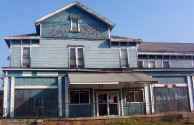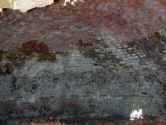Fayette County Genealogy Project
Fayette County and Surrounding County Coal Mines
By Ken O'Neal
By Ken O'Neal
During the 1800s and till the mid 1900s, coal mining and the making of coke for the Pittsburgh steel mills, was the largest industry , next to farming, in Southwestern Pennsylvania. Coal mines large company owned, and small private mines, abounded in this region. Many "patch towns", sprang up around these mines. "Patch towns" were a group of houses, built by the large coal companies, to house their workers. The H.C. Frick Coal Company, did not pay their workers in cash, but "script" that could only be used to pay rent for the "company house" and to buy groceries, clothing, and just about anything needed to buy for the household, at the "company store", owned by Frick. Not only did Henry Clay Frick rob his workers, by paying low wages, he also robbed them by forcing them to buy their food, clothes, and everything else needed for their families, at inflated prices at his "Company Store".

Frick Company
Store - Leisenring #1
(Click to enlarge)
Miners couldn't quit, because they had no money, and they would loose their home if they did. In my opinion this was nothing more than legalized slavery. Have you ever listened to Tennessee Ernie Ford's song "Sixteen Tons"?
Most miners working for the large coke companies, did owe their soul to the company store. Mine safety was non-existent in those days, and many many miners died in coal mines. My mother had two brothers that died in separate, coal mine accidents in the 1920s.
The large mines were well known and easy to see the associated buildings, but most private mines were seldom seen, by most people. Many small mines were worked by one to 4 or 5 men, and were usually located out behind the barn or house. I personally have known several people who sold coal that they had mined on their property. These mines were worked completely by hand, and their production was very low, but money derived from them supplemented their main job. In many of these private mines the seam of coal was only two or three feet high, meaning the miner had to crawl in the mine, not an easy job. The men, and boys, who did this were a tough bunch. This coal was usually used to heat homes. I bought coal from a man who worked at Anchor Hocking Glass Corp., where I worked. He had a small mine on his property, near Brownsville.
The coal mines in Southwestern Pa, was of the best quality for making coke, that was sent to Pittsburgh, to fire the blast furnaces for steel mills there. Coke was made by partially burning coal, in large brick ovens resembling old time bee hives and were called Beehive ovens. The ovens were filled with coal, and set on fire, and the loading opening on the side was sealed. There was a small opening in the top, for the smoke to escape. The coal actually smoldered, not burnt. for several hours. Then water was pored through the opening on the top. The resulting "coke" was then drawn out through a opening in the side. The resulting coke was lighter in weight, than coal and was silver gray in color. It would also burn much hotter, and did not have impurities found in coal. The coke was then sent to Pittsburgh, to be used as fuel in blast furnaces, to make steel. The coal from Southwestern Pennsylvania was regarded as the best in the world for making coke. There were nearly 20,000 coke ovens in Fayette County and coal was King. Without that coal, many of our ancestors would not have settled in Fayette County.
In later years there have been many uses for the smoke and gases given off in the manufacturing of coke. The old beehive ovens let these go off into the air, causing pollution, and staining stone buildings in the region.

Inside a
coke oven
(Click to enlarge)
I can remember going to school in the old Dunbar Twp, Hill School, situated on a hill above the H.C. Frick Mine and coke ovens at Leisenring. At times the wind would blow from a different direction, causing the poorly sealed school house to fill with smoke and disrupt the class. Fortunately this did not happen often.
To see what products are made from coal visit:
http://www.coaleducation.org/lessons/primary/uses/find_coal.htm
http://www.coalcandothat.com/
I bet you never knew coal had anything to do with these products. I remember reading in my 6th grade Geography book stating that "Connellsville, Pennsylvania, was the coke capital of the world". I can remember in the early 1950s, seeing the night sky, glowing from the many coke ovens. In the 1960s the coke ovens were being shut down partly because of the enormous amount of smoke they created, the fact that many by-products could be made from that smoke, and the fact that the steel mills were cutting back on production. Another reason for the demise of the coal mines was the use of oil for heating, when before the 1950s most homes and business were heated with coal.
When I was asked to tell of Fayette coal mines, I thought I would see
if I could learn the names of most of them and list them, but it didn't take much
research to learn, that there were hundreds of coal mines in this area. I also learned
that Rootsweb has a very complete source of data on coal mines that will give much more
information that I could ever research. If you want to learn about Southwestern
Pennsylvania coal mines go to:
http://patheoldminer.rootsweb.com
http://www.coalcampusa.com/
http://www.mcintyrepa.com/frontpage.htm
To learn more of the steel making process visit: http://www.p2pays.org/ref/01/text/00778/chapter2.htm
I hope that you have learned something of the coal mines and the coke ovens of the Fayette County area.